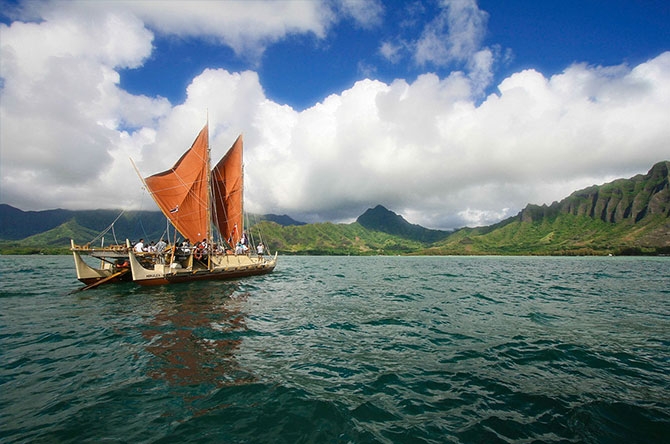WHEN the traditional Polynesian voyaging canoe, Hokule’a, completed the first round-the-world trip by such a vessel, ocean explorers and advocates across the Pacific celebrated more than just its homecoming to Hawaii on June 17.
The Hokule’a took three years to journey around the globe, its crew navigating without modern instruments, using only the stars, wind and ocean swells as guides. They used the same techniques that brought the first Polynesian settlers to Hawaii hundreds of years ago.
Thousands celebrated the Hokule’a’s homecoming on Honolulu’s Magic Island peninsula with pomp and fanfare as it arrived on its last leg from Tahiti accompanied by a flotilla of vessels, including its support canoe, Hikianalia and a new cargo canoe built for the Marshall Islands, Okeanos Marshall. Built in the 1970s and having first sailed in 1976 from Hawaii to Tahiti to prove Polynesians were great explorers and navigators, not drifters as some historians suggest. it travelled around 74,000km reaching 85 ports and 23 nations on this latest trip, known as the Malama Honua By Ilaitia Turagabeci
Back to the future voyage, meaning “to care for our Island Earth”
…..to read more buy your personal copy at

